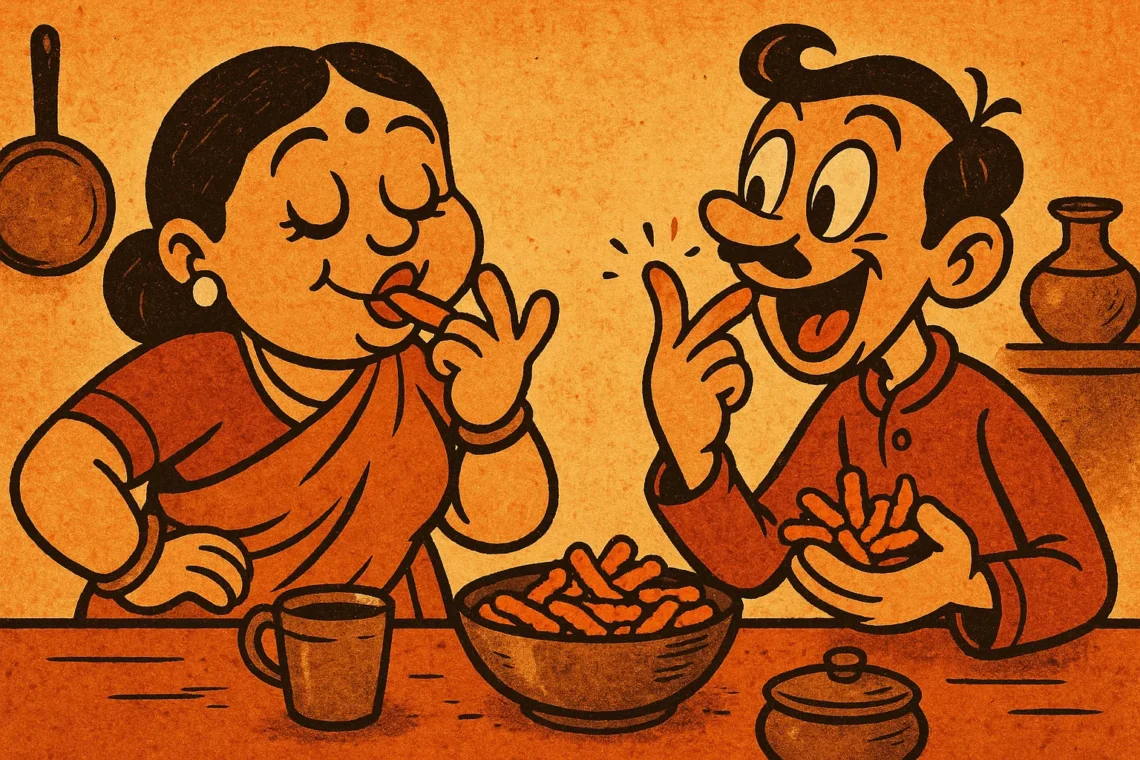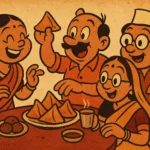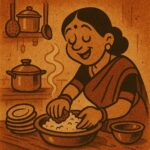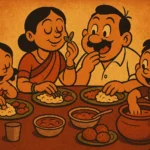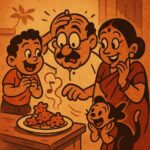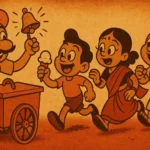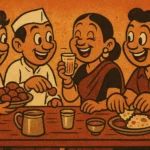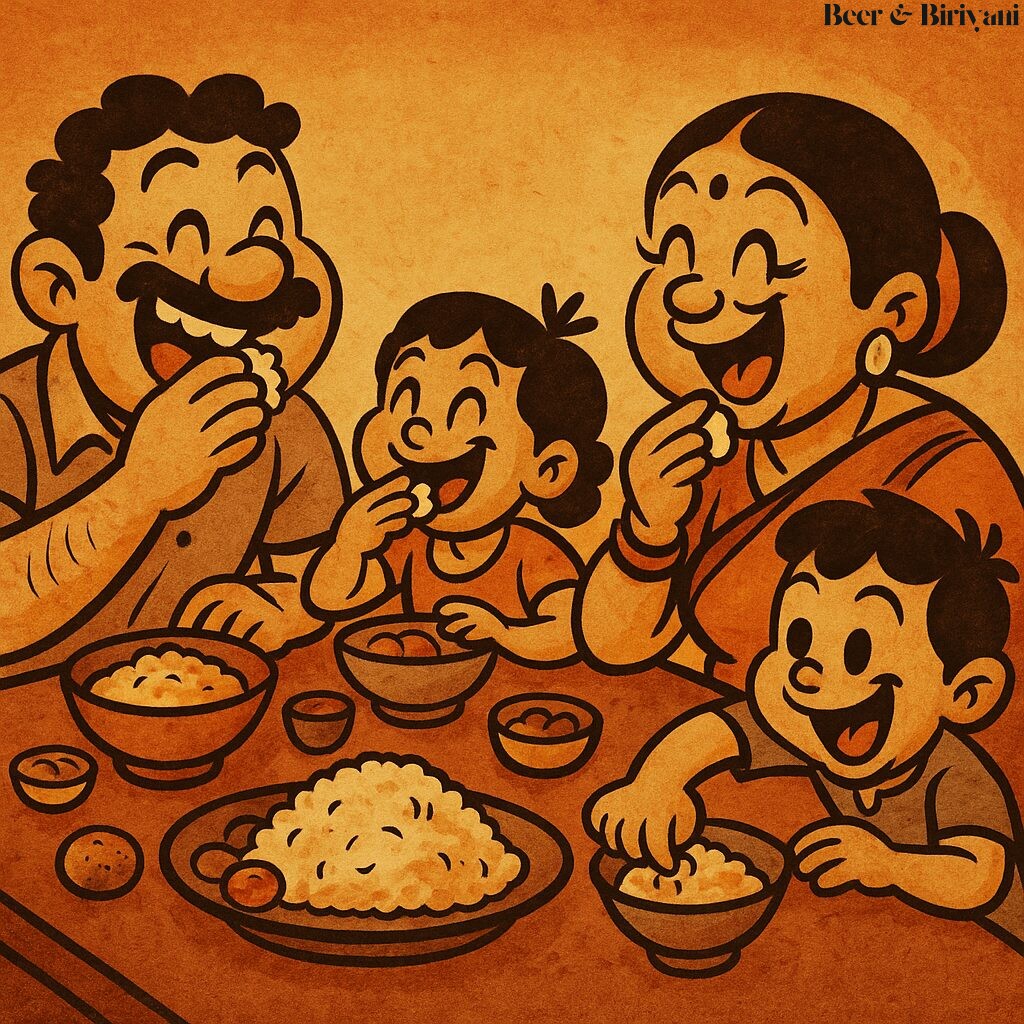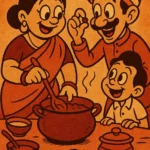The first time I realized food could be an event, not just a meal, was somewhere between third-period history and fourth-period boredom, when someone in class pulled out a pack of Kurkure. The sound of the crinkly orange wrapper being torn open was enough to turn every head in the room. You didn’t need a microphone. Just the promise of masala. Sharp, neon-orange masala. The kind that dyed your fingertips, tingled your tongue, and made your water bottle feel like a lifeline.
Kurkure wasn’t just a snack. It was a social performance. You opened a pack with a flourish. You offered exactly two pieces to your closest friends and gave a death stare to the guy who reached in uninvited. The whole process had rhythm: pick, crunch, chew, pause, lick. That last part—licking the masala off your fingers—was the sacred ritual. The slow burn. The encore. No one did it delicately. It was unabashed, unapologetic, and very, very personal.
The Masala Metric of Friendship
In school, we didn’t talk about emotions. We didn’t say, “I like you, bro.” We said, “Want the last Kurkure?” That was love. That was loyalty. And if you offered your masala-coated fingers to someone else for a communal lick—well, that was practically a blood oath. (Also slightly gross. But we were kids. Hygiene was theoretical.)
Of course, there were different Kurkure personalities. Some people finished the snack first and saved the finger-licking for dessert. Others licked between each bite, building up a slow crescendo of flavor. Then there were the chaotic ones who dumped the entire pack into their mouth and didn’t even savor the masala. We didn’t trust those people. Still don’t.
Tu Khaas Hai, Ye Bhi Khaas Hai
The flavor? No one really knows what it is. Officially, it’s something like “Masala Munch,” which is a non-answer at best. But really, it’s salt, spice, tang, MSG, and childhood. It’s the taste of school corridors and bus rides, of hiding wrappers from teachers, of bargaining with the canteen guy for one more pack with the extra 20% free. It’s your entire teenage moodboard—crunchy, spicy, inconsistent, and slightly addictive.
And there was always that one cousin who claimed their Kurkure was “extra masaledar,” who’d show off fingers stained deeper orange than yours, like it was a badge of honor. Sometimes you got lucky and found a piece that looked like it had been triple-dipped in spice. You’d save it for the end. The Final Boss. The one that made you wince and reach for your steel water bottle, only to realize it was already empty.
Masala Migration
When I moved to Austin, I thought I had left all that behind. But then, during a grocery run at the local desi store, I saw it. The familiar pack. Slightly overpriced. Slightly suspect. But the same shade of loud orange. I bought it without thinking. Tore it open in the parking lot. First bite: nostalgia. Second bite: maybe this was a bad idea. Third bite: okay, it still slaps.
What hit me wasn’t just the taste. It was the entire choreography that came with it. I still ate it slowly. Still rationed it like gold. Still licked my fingers after the last piece—though this time I discreetly wiped them on a napkin instead of my pants. Growth, I guess.
The Flavor That Outlived Us
Kurkure has survived all kinds of trends. It’s not health food. It doesn’t pretend to be. There’s no quinoa version (thankfully). It doesn’t need artisanal rebranding or heritage storytelling. It’s snack chaos in its purest form. And yet, it’s probably one of the most consistent things across generations. Your niece eats it while scrolling reels. Your father eats it while watching news debates. You eat it when no one’s watching, late at night, and pretend it’s “just a few pieces.”
And the best part? The masala stays. Long after the last crunch, it lingers—on your fingertips, on your lips, in your memory. You try to wash it off, but you never really want to. It’s the edible version of your teenage years: bold, slightly embarrassing, but always worth revisiting.
Because sometimes, all it takes is one orange finger to remind you where you came from—and how good things used to taste when shared straight from the pack.
Born in Mumbai, now stir-frying feelings in Texas. Writes about food, memory, and the messy magic in between — mostly to stay hungry, sometimes just to stay sane.

